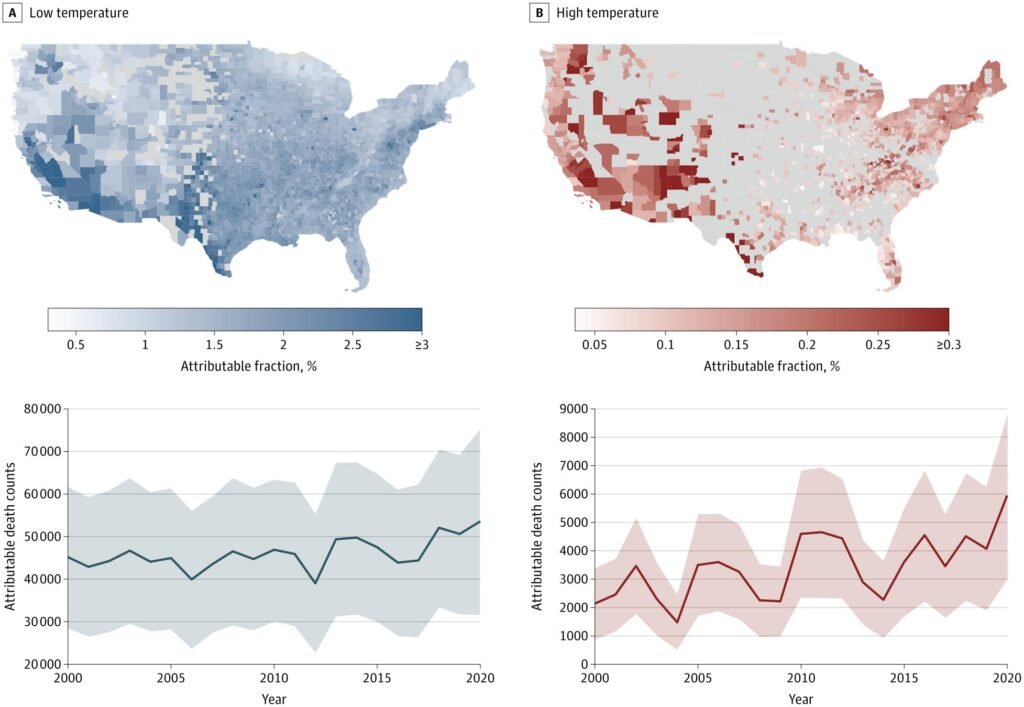Extreme temperatures are wreaking havoc on public health in the United States, according to a recent study conducted by researchers at the Yale School of Public Health (YSPH). The study, published in the journal JAMA Network Open, revealed alarming trends in mortality rates associated with heat and cold exposure over the past two decades.
The research findings indicate a significant increase in deaths related to heat exposure, surging by more than 50% since 2000. While cold weather remains a leading contributor to annual deaths in the U.S., the number of deaths linked to high temperatures has risen dramatically. Cold-related deaths saw a 7% increase, totaling over 47,500 annually between 2010 and 2020. In contrast, deaths associated with high temperatures spiked by 53%, surpassing 4,000 deaths per year during the same period.
Dr. Kai Chen, Ph.D., senior author of the study and associate professor of epidemiology at YSPH, emphasized the growing threat posed by extreme temperatures on human health. He noted that while cold temperatures continue to pose a dominant risk, the intensifying frequency of extreme heat events is making heat exposure increasingly dangerous.
To conduct the study, researchers analyzed more than 54 million death records from every county in the contiguous United States between 2000 and 2020. By employing advanced statistical models, the Yale team was able to assess how temperature fluctuations influenced mortality risk after accounting for local conditions and demographic factors.
The study revealed that both hot and cold days increased the likelihood of death within a week of exposure. Cold temperatures were found to be responsible for a larger share of excess deaths, with mortality risks rising by 5.7% on cold days and 1.1% on hot days.
Regional and demographic disparities in temperature vulnerability were also identified, with the western U.S. experiencing higher proportions of heat-related deaths and the southwestern U.S. recording more deaths linked to cold. Additionally, age, sex, and marital status played a role in susceptibility to temperature extremes, with older adults, women, and widowed or divorced individuals being particularly vulnerable to cold exposure.
The study further established links between heat and cold temperatures and specific causes of death. Cold exposure was associated with excess deaths from cardiovascular, respiratory, and metabolic diseases, while heat exposure was strongly linked to increased deaths from circulatory diseases and external causes such as injuries and accidents.
As extreme temperatures become more prevalent due to climate change, the researchers stressed that the rise in temperature-related deaths is not solely attributed to warming temperatures but also reflects demographic shifts that have heightened human vulnerability to environmental stressors.
With 10 of the warmest years on record occurring since 2012 and 2024 being the hottest year globally, the study underscores the urgent need for proactive measures to address the escalating health risks posed by extreme temperatures. As the climate crisis intensifies, understanding the complex interplay between temperature fluctuations and public health is crucial for developing effective strategies to mitigate the impact of extreme weather events on human well-being.


